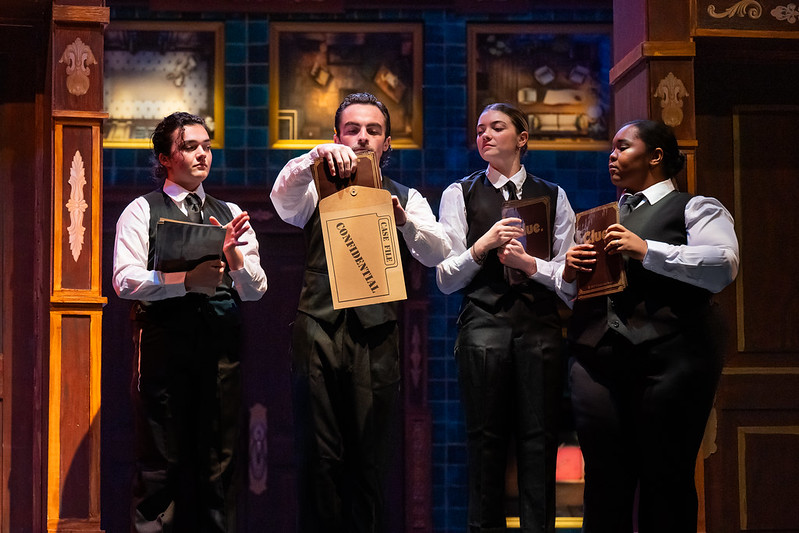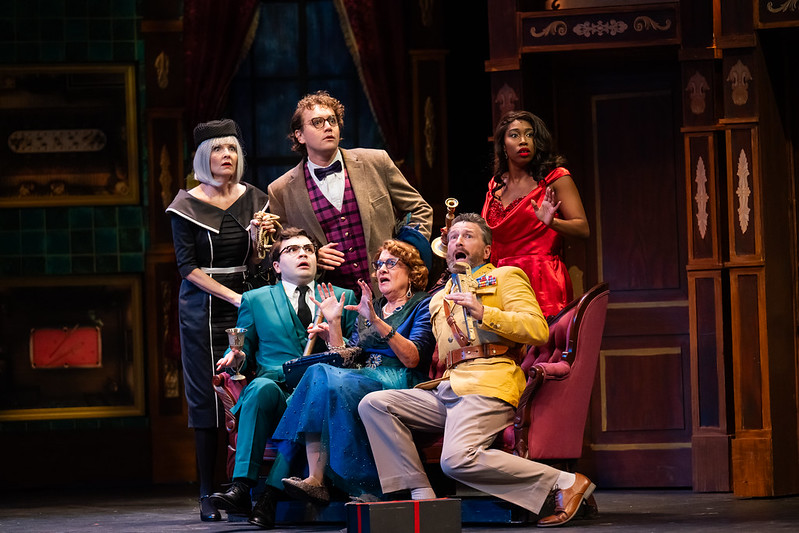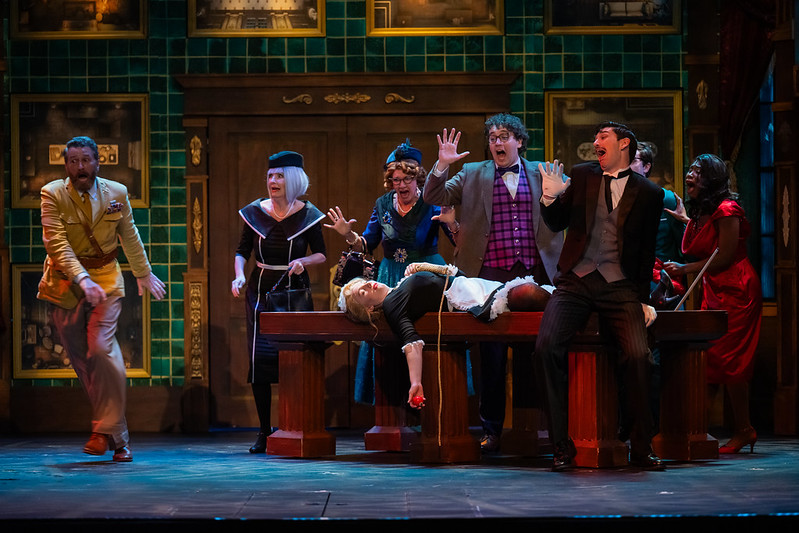We had the pleasure of catching up with Aline Toloto, the brilliant mind behind our props design for CLUE: ON STAGE. Once again, she has brought her exceptional skills to the Dock Street Theatre, and we invite you to take a behind-the-scenes look at her creative process in crafting the props for this uproarious production.
1) CLUE: ON STAGE features a variety of iconic props, such as weapons, secret passages, and objects that characters interact with. How did you plan to design and source these props to ensure they are both functional and visually appealing?
Designing a prop, like any other object, is always a combination of beauty and function. While the world of theatre props is not as vast as the movie industry, it has been growing over the past few decades. There are excellent books by experts like Eric Hart (one of my favorites) that provide guidance on creating various projects. Whenever possible, I use such references. The real challenge arises when you have to create unique props for which there is not a lot of reference to research from. In these cases, a lot of trial and error is involved, and the rehearsal period becomes vital for testing the functional aspects of the props. Ultimately, experience plays a significant role in prop making. The more you create, the better you become with each project.

2) CLUE: ON STAGE often involves physical comedy and quick exchanges of props. How did you create props that can withstand the demands of the performance while maintaining their authenticity and humor?
I love crafting props for comedies as they allow for more creativity. You can be bolder with colors, play with scale, and embrace the bizarre. For instance, having an oversized wrench might feel out of place in a historical drama, but in CLUE: ON STAGE it only adds to the humor. Additionally, in comedies, if a prop happens to break, it’s much easier to play it off as part of the act. It’s important to remember that a prop is just an object; its authenticity and vitality largely depend on how the actors and director utilize it. My role is to ensure they have a well-designed object to work with.
Watch CLUE: ON STAGE’s show trailer below!

3) Collaboration with the rest of the production team is crucial in theater. How did you work with the director, set designer, costume designer, and lighting designer to ensure that the props seamlessly integrated into the overall vision of the production?
This show is like a large canvas, painted by many artists, and props are one element that can add depth, contrast, or serve as a focal point if that’s the goal. As a Properties Supervisor, I participate in all design meetings to comprehend the design concept and ensure that props are an integral part of the production’s world. There’s a great deal of communication between different shops, including sharing color and fabric samples and conducting lighting tests to ensure everyone is aligned. In the very beginning of the process, the creative team decided to draw inspiration from the board game CLUE for the design. Based on that choice, I proposed making all the weapons gold, a theatrical design decision that not only made the weapons stand out but also created a striking contrast with the costumes and set.

4) What research and preparation do you typically undertake when designing and sourcing props for a production like CLUE: ON STAGE? How did you ensure that the props are historically accurate and appropriate for the time period and characters?
It’s an essential part of my process to research the historical period before beginning work on the props. Given that the play is set in the 1950s, finding accurate historical images of objects is relatively easy, different from a play that is set in the 1800s. However, strict accuracy isn’t always a requirement. Sometimes, I use an historical photo as inspiration to create something similar. Audiences tend to connect the silhouette of the object with something “vintage”, from the past, and most of the time, that is enough. As a theatre artist, it’s important to recognize that close-up details aren’t as crucial since the audience is typically seated at a distance.
5) As a props designer, how do you ensure that the props are safe for the actors to use during performances, especially when they involve physical comedy or quick changes?
There are safety guidelines that are an integral part of our protocol, such as ensuring that knives are dull, guns are non-firing replicas, and avoiding the use of glass on stage whenever possible. The choice of materials is also crucial for creating safe props. For example, opting for soft materials like foam or rubber for knives and swords can significantly enhance safety during performances.

6) Finally, what excites you the most about our audiences experiencing CLUE: ON STAGE and seeing your properties design?
What excites me the most about our audiences experiencing CLUE: ON STAGE and seeing my properties design is the opportunity to transport them into a world of mystery, comedy, and nostalgia! I hope we can get many big laughs!
Get your tickets to see CLUE: ON STAGE, running November 2nd – November 5th, at CharlestonStage.com.

Originally from Brazil, Aline holds a Master of Fine Arts degree in Theatre and Technology with emphasis in Scenic Design from the University of Southern Mississippi. With extensive experience as a Prop Master, Scenic Designer, and Set Decorator, Aline’s career highlights include her role as Properties Supervisor for Charleston Stage’s 45th Season, overseeing eight captivating shows including The Addams Family, A Christmas Carol, and Once On This Island. She is thrilled to continue with the company for the next year.
